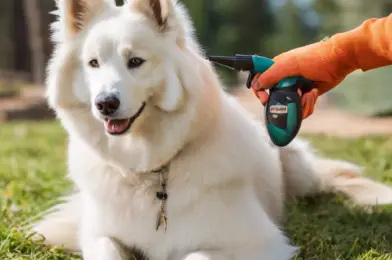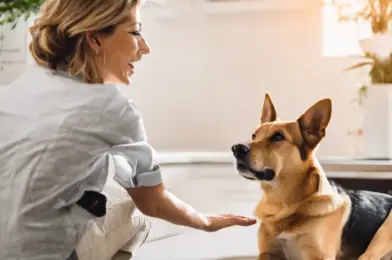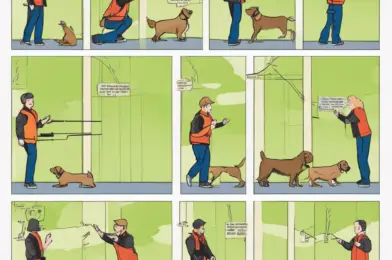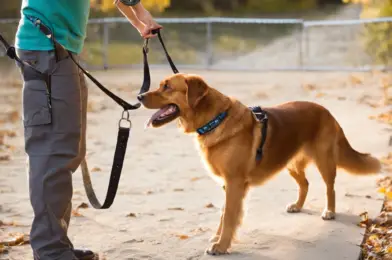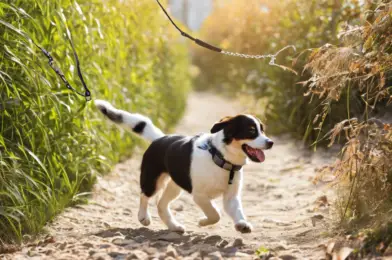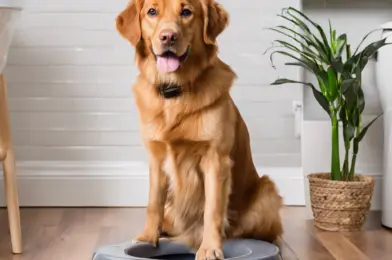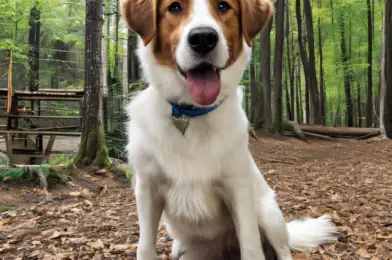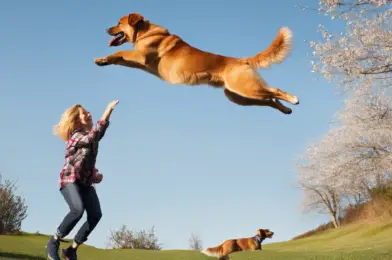# Teaching Your Dog to Settle: Mastering Calmness Amidst Excitement
In the bustling world of dog ownership, where energetic play and bustling activities often take center stage, teaching your dog to settle is a skill that can transform your daily routine and enhance your canine companion’s overall well-being. Imagine a scenario where, amidst the chaos of a busy household or a bustling city street, your dog effortlessly transitions from playful exuberance to a calm, relaxed state. This is not just a dream but a reality that can be achieved through effective training and understanding your dog’s behavior.
## The Art of Settling: More Than Just a Command
Teaching your dog to settle goes beyond simply instructing them to lie down. It’s about cultivating a default state of calmness, a behavioral foundation that allows your dog to self-regulate and remain composed in various situations. This skill is particularly valuable in managing anxiety, reducing over-excitement, and ensuring your dog can adapt to different environments with ease.
When we talk about settling, we’re referring to a voluntary, relaxed behavior where your dog chooses to remain calm and composed without external prompts. This behavior becomes their go-to response, especially in potentially stimulating or stressful situations. By mastering this skill, your dog can better cope with everyday challenges and become a more well-adjusted companion.
## Understanding the Benefits of a Calm Canine Companion
A dog trained to settle enjoys numerous advantages that contribute to their overall happiness and well-being. Firstly, it helps them conserve energy, ensuring they don’t become overly exhausted from constant excitement or stress. This is especially important for puppies and high-energy breeds, who may struggle with self-regulation without proper guidance.
Secondly, teaching settling fosters emotional balance. Dogs that can settle are less likely to experience anxiety or overstimulation, which can lead to problematic behaviors like excessive barking, destructive chewing, or even aggression. By encouraging calmness, you’re providing your dog with a valuable coping mechanism for stressful situations.
Moreover, a well-settled dog is a joy to be around in various social settings. Whether you’re hosting guests at home, visiting a friend’s house, or enjoying a quiet evening at a café, your dog’s ability to settle will ensure they remain calm and mannerly, making them a delightful companion wherever you go.
## Getting Started: Training Techniques for Success
Teaching your dog to settle is a gradual process that requires patience, consistency, and positive reinforcement. Here are some effective techniques to get you started:
– **Capturing Calm Moments:** Begin by identifying moments when your dog is naturally calm and relaxed. Whether they’re lying down after a walk or taking a break between play sessions, use these moments to praise and reward them. This helps your dog associate their calm behavior with positive outcomes.
– **Cue Training:** Introduce a specific cue, like “settle,” when your dog is in a calm state. Use the cue consistently, always rewarding the behavior to establish a clear connection between the word and the action. Over time, your dog will learn to respond to the cue even in less relaxed settings.
– **Duration Building:** Start by rewarding short periods of settling and gradually increase the duration. This teaches your dog to maintain a calm state for extended periods. Begin with a few seconds and work your way up, always rewarding success.
– **Environmental Exposure:** Gradually expose your dog to various environments and situations while practicing settling. Start in a quiet, familiar setting and slowly introduce new locations, sounds, and distractions. This helps your dog generalize the behavior, ensuring they can settle in any context.
## Troubleshooting Common Challenges
Training your dog to settle may come with its fair share of challenges, but with patience and persistence, you can overcome these hurdles:
– **Distractions:** If your dog struggles to focus due to distractions, start training in a quiet, distraction-free environment. Gradually increase the difficulty by introducing new stimuli and rewarding successful settling despite distractions.
– **Over-Excitedness:** For high-energy dogs, it’s important to provide ample physical and mental exercise before settling sessions. This helps burn off excess energy, making it easier for them to relax. Consider engaging in play or training activities before settling practice.
– **Consistency:** Inconsistency can hinder your dog’s progress. Ensure that all family members and caregivers use the same cues and techniques to reinforce the behavior consistently.
## Advanced Tips for a Well-Mannered Canine
As your dog becomes proficient in settling, consider these advanced techniques to further enhance their behavior:
– **Long-Distance Settling:** Practice settling from a distance, gradually increasing the space between you and your dog. This teaches your dog to settle even when you’re not immediately by their side.
– **Settling on Command:** Train your dog to settle on a specific mat or bed, creating a clear association between the location and the behavior. This can be especially useful when you need your dog to relax in a specific area.
– **Settling for Extended Periods:** Gradually work towards longer settling durations, teaching your dog to remain calm for extended periods. This is particularly useful for situations like mealtimes or when you’re engaged in activities where you need your dog to be calm and patient.
## Real-Life Success Stories
Many dog owners have successfully implemented settling training, transforming their dogs’ behavior and overall well-being. For instance, Sarah, a proud dog mom, shared her experience with training her Australian Shepherd, Max. She started by capturing his natural calm moments and gradually built up his settling duration. Today, Max effortlessly settles on his mat during mealtimes and remains calm in various social settings, making him a beloved companion for Sarah and her family.
## Conclusion
Teaching your dog to settle is a valuable investment in their behavior and your shared happiness. It empowers your dog to manage their energy levels, cope with stress, and adapt to various environments with grace. Through patience, consistency, and positive reinforcement, you can guide your dog towards becoming a well-mannered, calm companion, enriching your bond and enhancing your daily life together. Embrace the journey of settling training, and soon you’ll be enjoying the rewards of a relaxed and content canine friend.


